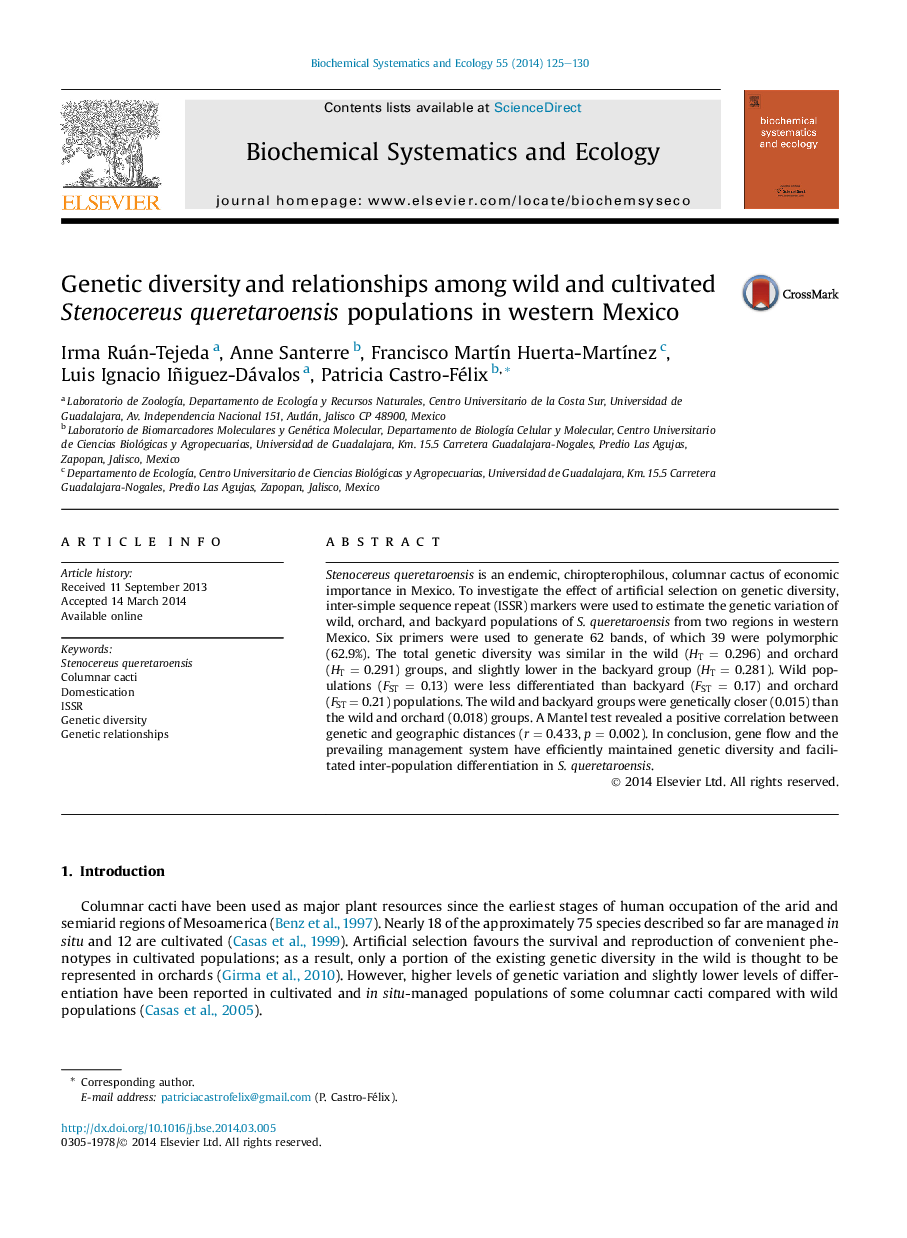| Article ID | Journal | Published Year | Pages | File Type |
|---|---|---|---|---|
| 7768715 | Biochemical Systematics and Ecology | 2014 | 6 Pages |
Abstract
Stenocereus queretaroensis is an endemic, chiropterophilous, columnar cactus of economic importance in Mexico. To investigate the effect of artificial selection on genetic diversity, inter-simple sequence repeat (ISSR) markers were used to estimate the genetic variation of wild, orchard, and backyard populations of S. queretaroensis from two regions in western Mexico. Six primers were used to generate 62 bands, of which 39 were polymorphic (62.9%). The total genetic diversity was similar in the wild (HT = 0.296) and orchard (HT = 0.291) groups, and slightly lower in the backyard group (HT = 0.281). Wild populations (FST = 0.13) were less differentiated than backyard (FST = 0.17) and orchard (FST = 0.21) populations. The wild and backyard groups were genetically closer (0.015) than the wild and orchard (0.018) groups. A Mantel test revealed a positive correlation between genetic and geographic distances (r = 0.433, p = 0.002). In conclusion, gene flow and the prevailing management system have efficiently maintained genetic diversity and facilitated inter-population differentiation in S. queretaroensis.
Related Topics
Physical Sciences and Engineering
Chemistry
Organic Chemistry
Authors
Irma Ruán-Tejeda, Anne Santerre, Francisco MartÃn Huerta-MartÃnez, Luis Ignacio Iñiguez-Dávalos, Patricia Castro-Félix,
